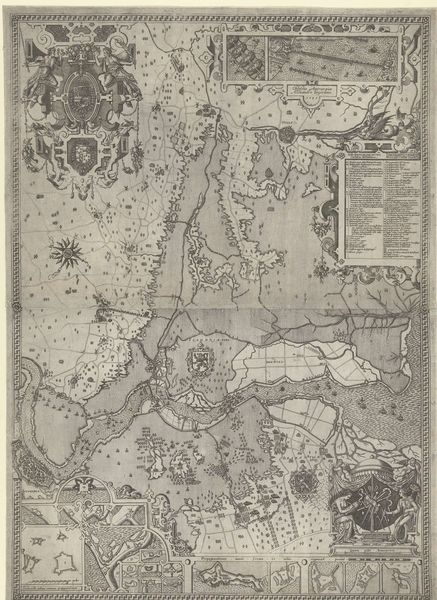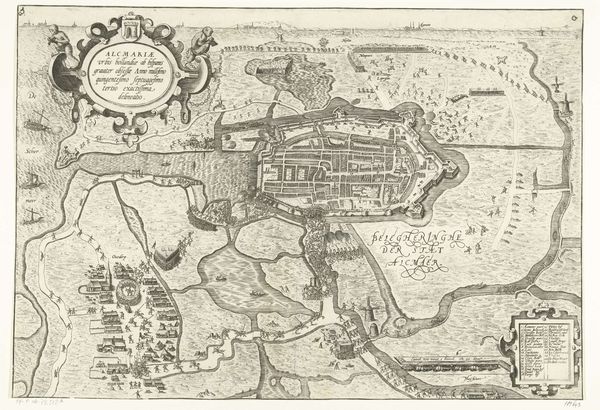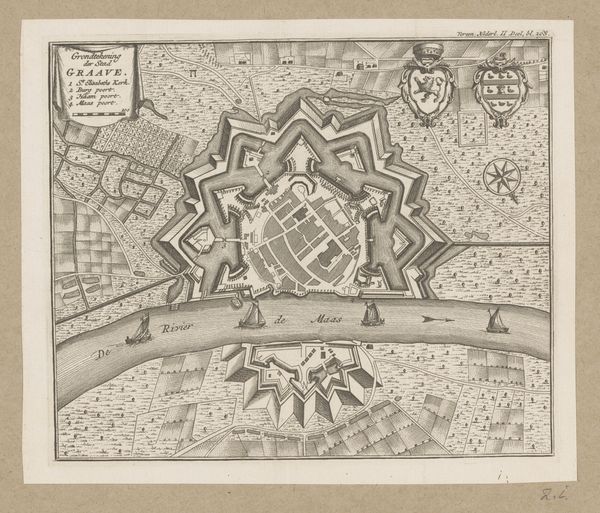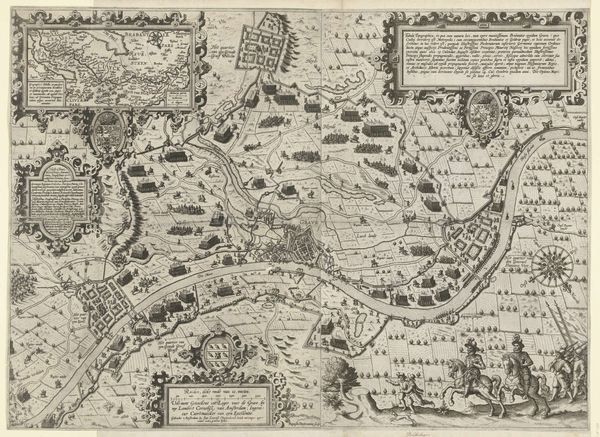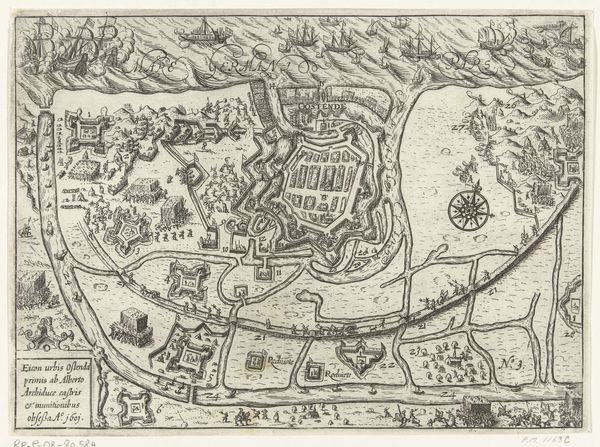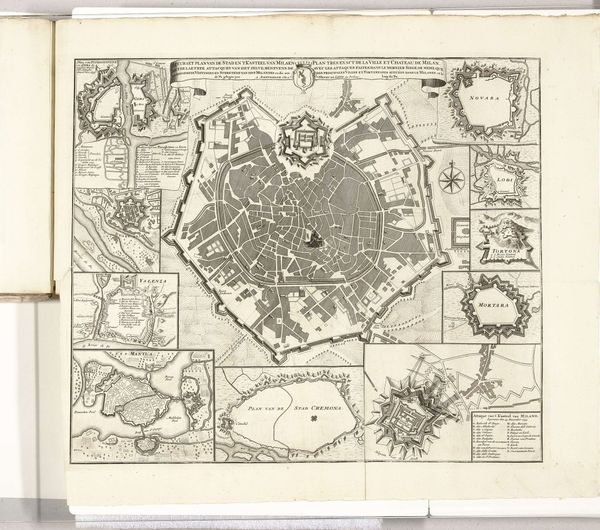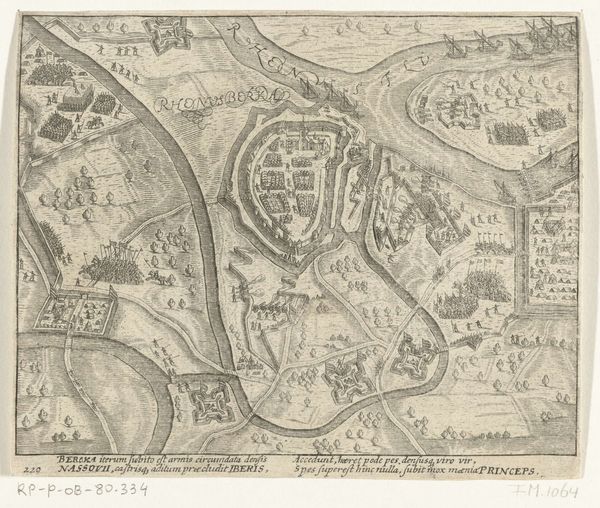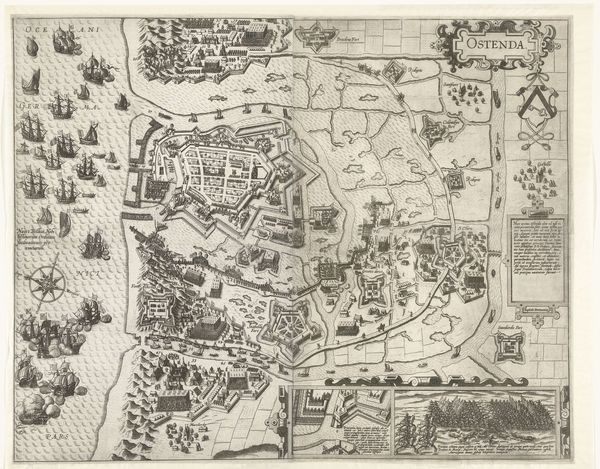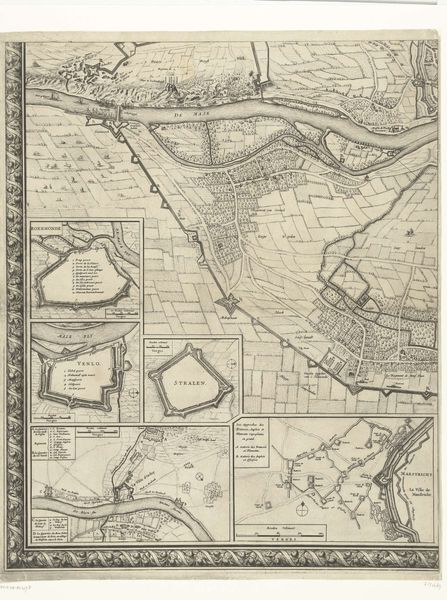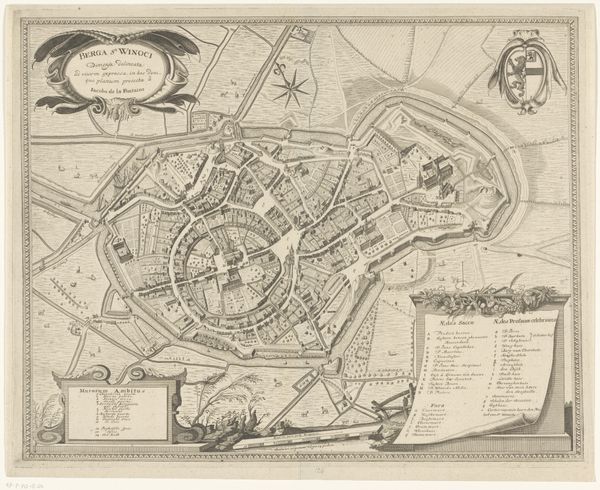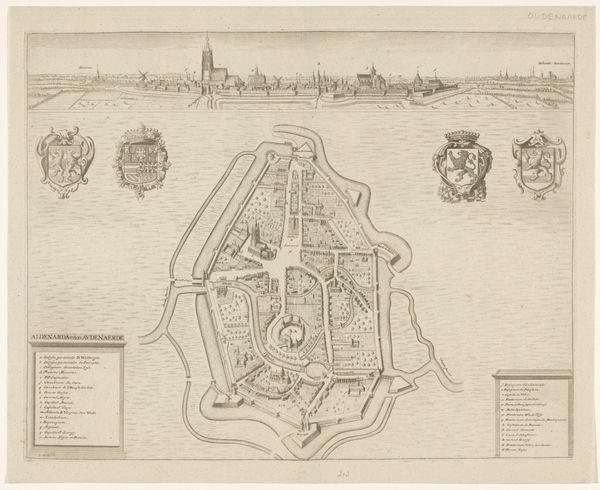
Map of Stockholm (Aubry de La Mottraye's "Travels throughout Europe, Asia and into Part of Africa...," London, 1724, vol. II, pl. 32) 1723 - 1724
0:00
0:00
drawing, print, ink, pen, engraving
#
portrait
#
drawing
#
pen drawing
# print
#
pen illustration
#
pen sketch
#
ink line art
#
ink
#
geometric
#
pen-ink sketch
#
pen work
#
pen
#
cityscape
#
engraving
Dimensions: sheet: 9 15/16 x 6 11/16 in. (25.2 x 17 cm)
Copyright: Public Domain
Curator: Looking at this elaborate city plan, I find myself immediately drawn into a quest for hidden meanings. It’s a dizzying collection of swirling patterns and carefully rendered details that somehow speak to order. Editor: And it should. What we’re seeing is an engraving of Stockholm from 1723 or 1724, originally appearing in Aubry de La Mottraye's "Travels throughout Europe, Asia and into Part of Africa…" Curator: Maps as symbols. A symbolic claim over a specific place. What fascinates me are the cartouches, medallions, and embellishments surrounding the central map – they’re far more than mere decoration. Editor: Absolutely. Hogarth, attributed to this particular engraving, infuses social and political messages into every detail. The portraits of monarchs, the Latin inscriptions— they’re all carefully chosen to project power and legitimacy. Curator: I wonder what those symbols communicate about Sweden's geopolitical position at the time. Was Hogarth offering commentary on its relationship with other European powers through this elaborate visual language? Or the medallions representing historical rulers, weren't those meant to project a lineage, to legitimize power through linking with the past? Editor: Precisely! But I think we shouldn't neglect how the structure and details represent Swedish colonial ambition and desires, and what the human costs of this might have been. Curator: True. When viewed through that lens, what initially appears as a celebration of progress reveals darker truths. How can we contend with the artwork and address that paradox through our curatorial interventions? Editor: Well, it requires deconstructing the myth of progress itself. Highlighting stories that push back. Exploring the consequences of colonialism and statecraft. That’s one direction for sure. But on a symbolic level, this piece acts as a signifier of the cultural mindset present during Stockholm’s transformation. Curator: Thank you. Looking through the city layout framed by symbols certainly prompts many insights into history, ideology, and culture.
Comments
No comments
Be the first to comment and join the conversation on the ultimate creative platform.

